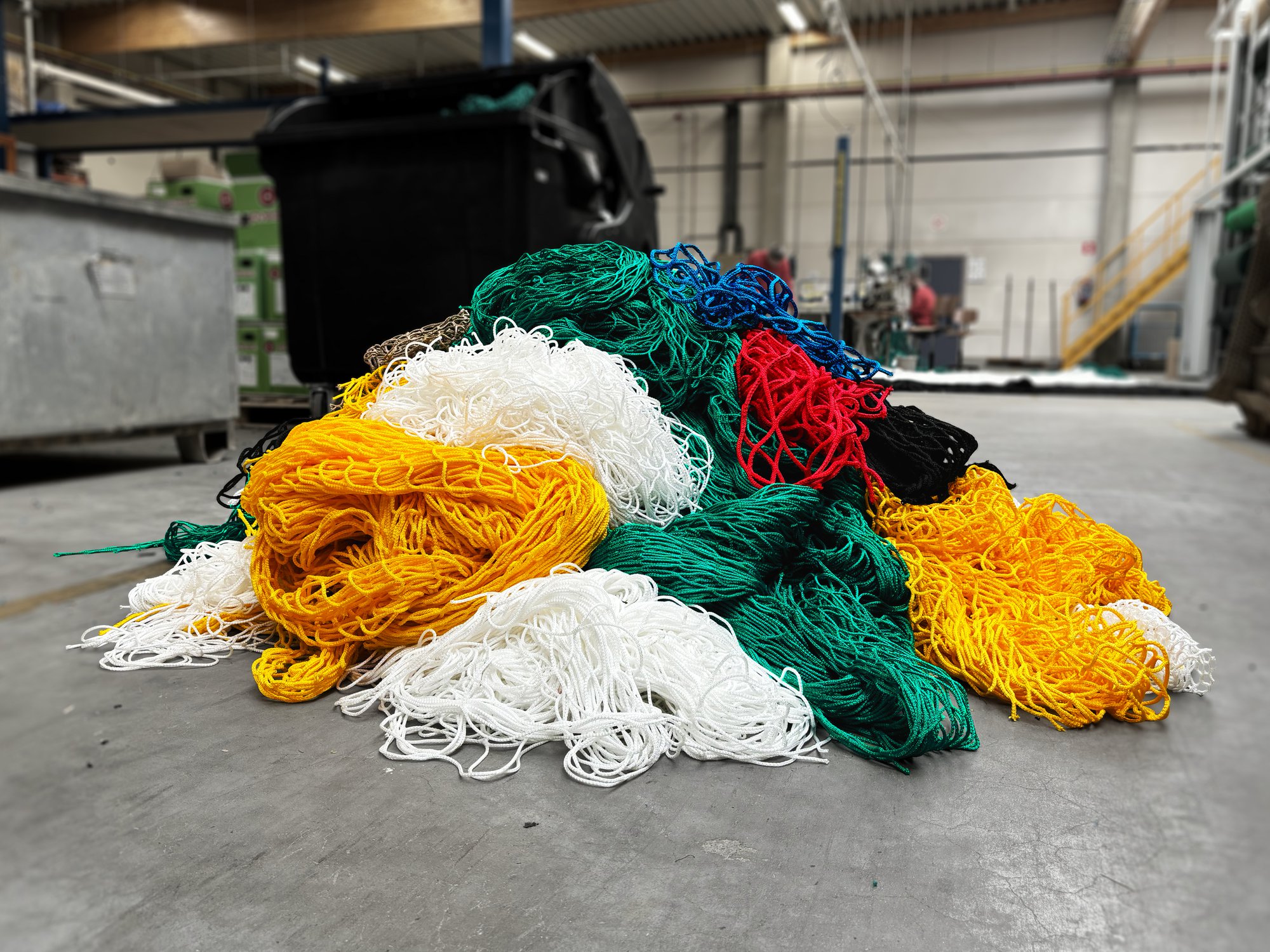How Duranet recycles cutting waste

Sustainability and circularity are only increasing in importance. Duranet will therefore recycle all its cutting waste instead of having it incinerated.

In recent months, Duranet has invested, among other things, in a machine to cut strapping bands and launched a selective collection of polypropylene coils. Now, we are going one step further: instead of having all cutting waste incinerated, we are now recycling it into new products.
The cutting waste problem
Unfortunately, when producing tailor-made nets, there is always some part of the basic material that is lost in the form of cutting waste. These are pieces of material that are cut off to create the desired net shape and they can’t be used afterwards in any future productions. Until recently, these cuttings always ended up as residual waste, to be incinerated later on. But these are pure and unused materials, making it particularly unfortunate they are not given a second life.

However, this cutting waste often consists of long and narrow pieces of network. It is therefore particularly difficult to give them a new use, because the existing processing machines are literally and figuratively jammed with them.
Recycling
Recycling cutting waste offers several advantages:
- Reducing waste: by recycling cutting waste, the amount of waste generated in the confection of nets is significantly reduced. This way, we reduce the amount of residual waste that is eventually incinerated.
- Environmentally friendly: by reusing materials that would otherwise go to waste, the need for new raw materials is reduced, thus reducing the human impact on the environment.
Long search
After a long search together with The Circle of Packaging, we found a solution to recycle this cutting waste. The polypropylene cutting waste will now be partially unravelled so the fibres can be recovered. In a next step, these fibres will be melted to make new polypropylene granules. These granules will then be used to make new products.
This way, Duranet takes another step in reducing its ecological footprint and making its activities even more circular.
Recent articles
- How to install construction safety nets correctly
Written on April 19, 2024 - How Duranet recycles cutting waste
Written on January 26, 2024 - Why fall arrest nets are essential to the construction industry
Written on January 8, 2024 - Duranet invests in Sweed scrap chopper to recycle straps
Written on March 14, 2023 - Discover your online customer portal now!
Written on February 9, 2023 - Duranet will recycle all polypropylene reels
Written on June 13, 2022 - Extension of the barrier netting range
Written on February 19, 2020 - Duranet supplies construction safety nets to be used around the Cathedral of Our Lady in Antwerp
Written on October 29, 2019 - Playground nets Hangtime in Ostend
Written on August 28, 2019 - The effect of solar radiation on plastic nets and tarpaulins
Written on July 9, 2019 - New insect protection net for organic horticulture
Written on June 12, 2019 - Mandatory annual inspection of construction safety nets
Written on March 14, 2019 - Duranet present at Biennale Interieur
Written on November 26, 2018 - New in our product range: fibreglass reinforcement mesh
Written on May 23, 2018 - Duranet website also available in English
Written on March 22, 2018 - Accidents can be prevented by covering oil pits…
Written on February 9, 2018 - Reinforcements for the Duranet management
Written on November 30, 2017